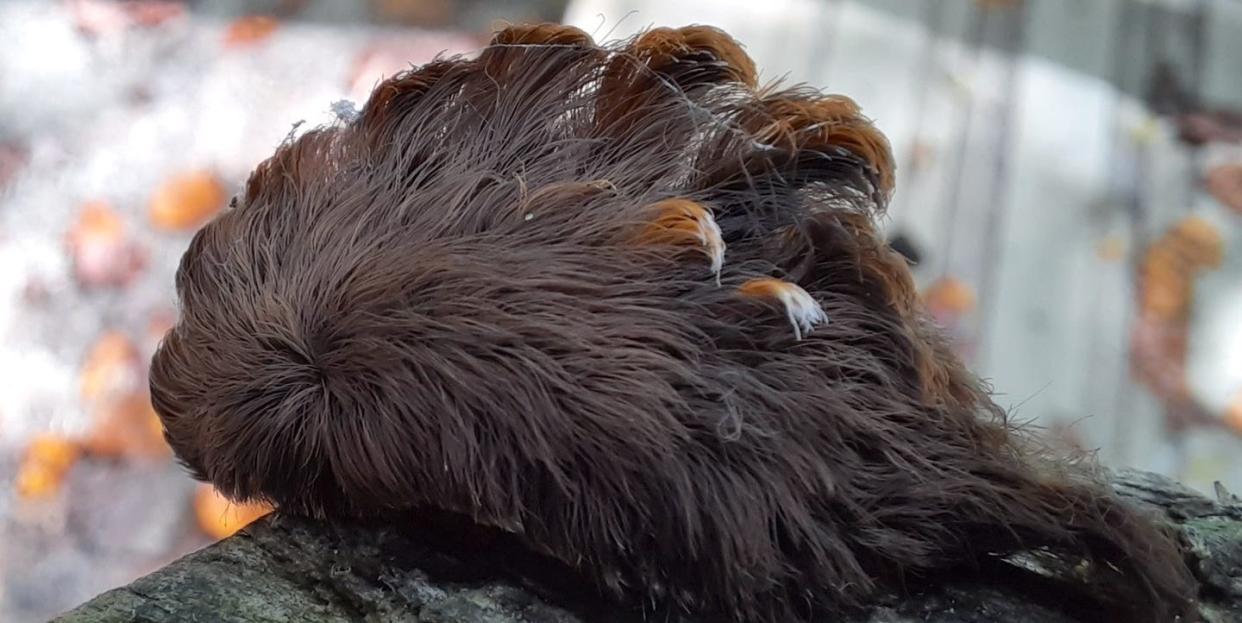These Hairy Caterpillars Look Innocent, but Sting Like a “Scorching-Hot Knife”

Puss caterpillars are popping up in Virginia, and despite their appearance, they’re quite dangerous—some of the most venomous caterpillars in the U.S.
Their wig-like hairs are actually spines that can cause intense pain, swelling, vomiting, and fever if touched.
The Virginia Department of Forestry reports that they’re being spotted in the eastern part of the state, but the creature can be found in other parts of the U.S.
In news only 2020 could bring, even seemingly cute creatures can be dangerous. Virginia officials are warning residents to stay far away from puss caterpillars, which have been spotted in the state’s eastern counties, as the hairy critters are actually extremely venomous.
Earlier this month, the Virginia Department of Forestry (VDF) reported in a Facebook post that puss caterpillars had been spotted in the state. “The ‘hairs’ of this caterpillar are actually venomous spines that cause a painful reaction if touched,” the agency warned. “#SocialDistance away from this caterpillar!”
What does a puss caterpillar sting feel like?
Despite their soft appearance, the insect’s hairs pack a painful punch. Symptoms of a puss caterpillar sting include intense pain, swelling, a red, itchy rash, restlessness and anxiety, vomiting, fever, muscle cramps, swollen glands, and even signs of shock, according to University of Michigan Medicine.
One unlucky Virginia woman described her own brush with a puss caterpillar in even worse terms. “It felt exactly like a scorching-hot knife passing through the outside of my calf,” she told The Virginia Mercury. “I thought 100% I was going to see a big piece of metal, super sharp, sticking out from my car.” It took three days (and a trip to the ER) for the “white hot pain” to subside, she said.
The caterpillars have a long history of causing medical emergencies. In 2018, a 15-year-old in Florida was rushed to the hospital after brushing against one while doing yard work. Another Florida woman was sent to the hospital after one touched her wrist in 2019: “I’ve had two C-sections, other surgeries, and nothing came close to the pain,” she wrote on Facebook. “It felt like someone was drilling into my bones.”
Where do puss caterpillars live?
Puss caterpillars are the larva of the southern flannel moth, a species found anywhere between the Northeast (as far as Maryland) down to the southern states, ranging as far west as Missouri and Texas. As adults, the moths are tiny and pretty much harmless—they’re only venomous during adolescence.
Puss caterpillars feed on leaves in forests, but they “can be found in parks or near structures,” the VDF explains. The bugs are also quite small; full-sized caterpillars are under two inches long. Along with early summer, fall is the time of year when they’re most active, according to the University of Florida Institute of Food and Agricultural Sciences (UFIFAS).
What should you do if you get stung by a puss caterpillar?
Identifying a puss caterpillar sting is easy—due to all of those spines, they leave behind marks shaped just like their bodies. If you’re stung, you should also be able to find the caterpillar resting nearby.
To reduce pain and other symptoms, UFIFAS suggests applying tape to help remove the spine tips from the skin, icing the affected area, applying hydrocortisone cream to reduce inflammation, and taking an oral antihistamine to minimize the reaction. If you have any severe symptoms or feel like you’re having an allergic reaction, head to the ER ASAP.
For now, there’s no reason to panic. Puss caterpillars are still relatively rare, so as long as you stay alert when in their habitat, you should feel safe even if you see one. “If you find the caterpillar, leave it alone and let its natural enemies control their populations,” the VDF says.
Hey, at least they’re not murder hornets.
You Might Also Like

